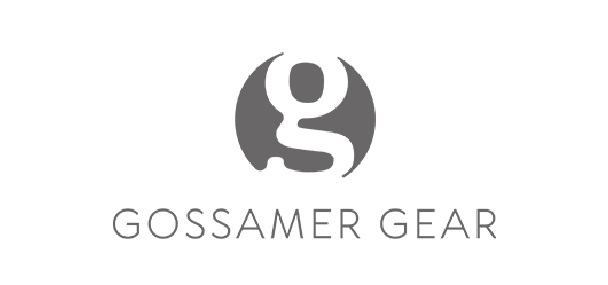Superfeet Copper DMP Review
The folks at Superfeet, one of my sponsors, sent me a pair of their Copper DMP insoles for field testing. At first glance, I couldn’t help but notice that they were thicker and appeared to have more cushion.
After close inspection I found the DMP’s are 5mm thick, while your standard Greens Superfeet insoles are 4mm. The DMP has what appears to be two or three foam layers, while Greens have one. The technology behind DMP’s is simple: they are designed to mold to your foot like a heat-moldable insole without the heating process while they continue to support your foot!
From the Superfeet website:
Superfeet Copper DMP naturally molds to your unique foot shape through daily wear, giving you a personalized fit without having to heat the insole in an oven. As the DMP foam adapts to the shape of your foot, the insole’s biomechanical integrity remains intact for support and stabilization. Designed primarily for footwear with a removable insole.
My impressions over two weeks:
Day 1: My shoe volume for both feet decreased noticeably and they felt tight. Wore shoes for 4 hours.
Day 2 : Didn’t notice the decrease in volume. Shoes and feet felt great all day. Wore shoes for 9 hours.
Days 3 through 7: I barely noticed I had insoles in except for the fact that my feet felt great after standing on concrete for 7 hours a day.
Week 2: Insoles are perfectly formed to my foot and I don’t notice their there. My feet feel less tired at the end of the day.
Note how the DMP is thicker and has multiple types of foam.
Since the DMP is meant for low to moderate activities it has a swallower heel cup.
The DMP has extra ridges running along the foot and the plastic support is shorter.
Summary: My overall opinion of the Copper DMP insoles: They do what they claim. My feet are more comfortable and I’m less tired at the end of the day. The only draw back I can see is the price tag.
Rating: 4 out of 5
After posting this review I had some questions about what type of arch support Superfeet had. I called Superfeet and here is what they had to say:
“The longitudinal arch is the biggest arch in the foot the arch on the inside of the foot that runs from the heel to the ball of the foot. Everyone asks if they need arch support, and this is the arch they are talking about. What they really need is foot support, not just arch support. The goal of any good orthotic is to support the entire foot. What is needed is more than just support in one area of the foot, such as the arch. If you support the rearfoot (the heelbone) then you are essentially helping support the arch without actually propping it up or filling it. A misconception is that the foot needs an arch support to fill the arch. There’s some benefit to having contact on this area of the foot, however it’s more important that there is equal contact and pressure distribution across the entire surface of the foot, which is Superfeet’s goal. Superfeet support the rearfoot, the midfoot and the forefoot. All Superfeet products will take an impression of your foot after you wear them the design of our Copper DMP with the three layers of foam, creates a more defined impression of the bottom of the foot, and helps distribute the weight-bearing surface across the foot even more. :
“Metatarsal pads (buttons) are typically only used for forefoot abnormalities and are prescribed by doctors. Their positioning is critical and needs to be adjusted per patient. It’s almost impossible and not preferable to add this type of medical addition to an insole at the factory, because they are not adjustable.” – Jeff Gray, C.Ped
Scatman
Get out there!
Powered by adventure, supported by Superfeet, fueled by Feed the Machine, Hydrated by nuun.
Wondering how you can support the next adventure? Simply support the following and you will be. Amazon.com and Backcountry.com

























do they have any longitudinal arch or a metatarsal button? I find those to make a big difference for me and the normal superfeet don’t have them
The people at Superfeet had this to say:
“The longitudinal arch is the biggest arch in the foot the arch on the inside of the foot that runs from the heel to the ball of the foot. Everyone asks if they need arch support, and this is the arch they are talking about. What they really need is foot support, not just arch support. The goal of any good orthotic is to support the entire foot. What is needed is more than just support in one area of the foot, such as the arch. If you support the rearfoot (the heelbone) then you are essentially helping support the arch without actually propping it up or filling it. A misconception is that the foot needs an arch support to fill the arch. Theres some benefit to having contact on this area of the foot, however its more important that there is equal contact and pressure distribution across the entire surface of the foot, which is Superfeets goal. Superfeet support the rearfoot, the midfoot and the forefoot. All Superfeet products will take an impression of your foot after you wear them the design of our Copper DMP with the three layers of foam, creates a more defined impression of the bottom of the foot, and helps distribute the weight-bearing surface across the foot even more.
Metatarsal pads (buttons) are typically only used for forefoot abnormalities and are prescribed by doctors. Their positioning is critical and needs to be adjusted per patient. Its almost impossible and not preferable to add this type of medical addition to an insole at the factory, because they are not adjustable.” – Jeff Gray, C.Ped